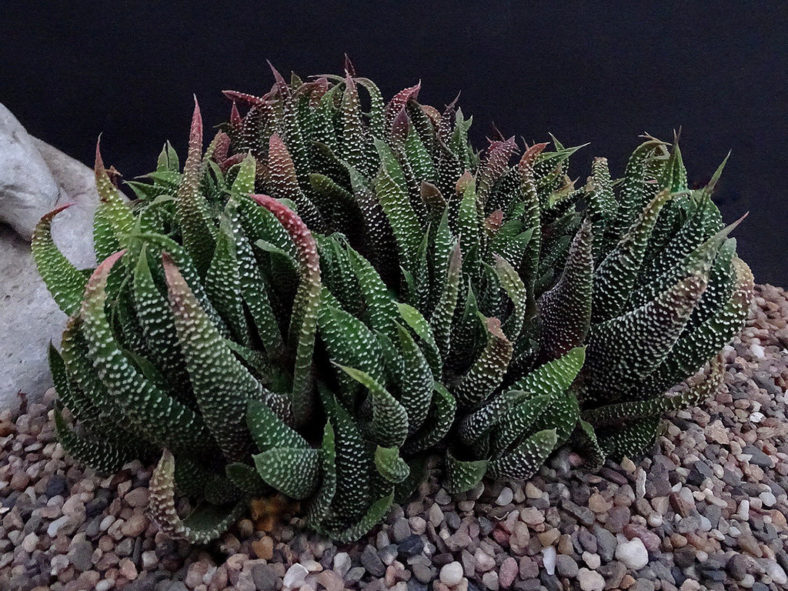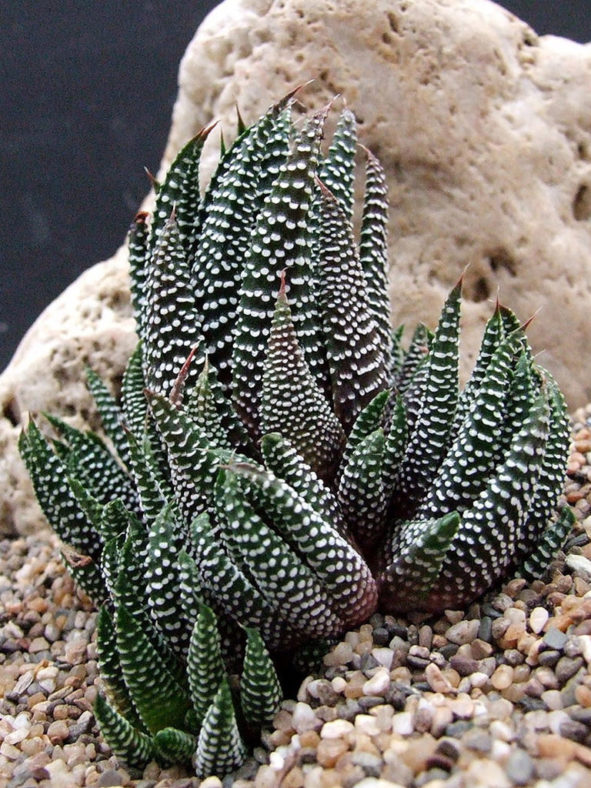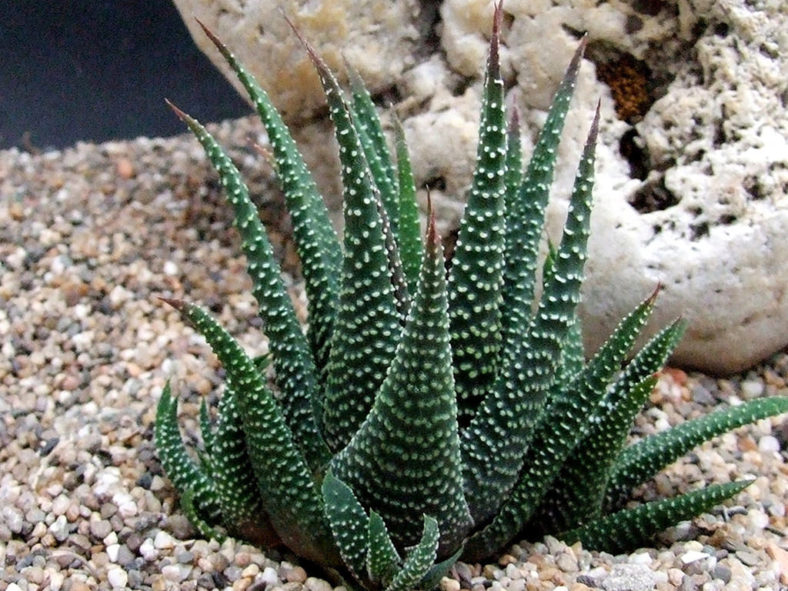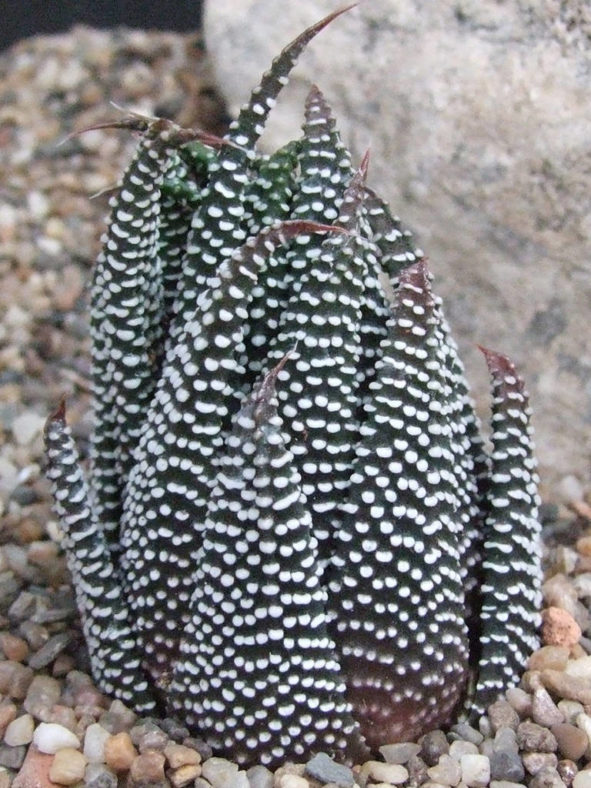Scientific Name
Tulista minima var. poellnitziana (Uitewaal) Breuer
Accepted Scientific Name
Tulista minor (Aiton) Gideon F.Sm. & Molteno
Synonym(s)
Haworthia minima var. poellnitziana, Haworthia poellnitziana
Scientific Classification
Family: Asphodeloideae
Subfamily: Asphodeloideae
Tribe: Aloeae
Genus: Tulista
Etymology
The varietal epithet "poellnitziana (poel-nit-zee-AY-nuh)" honors Dr. Karl von Poellnitz (1896-1945), a German botanist, researcher, and agronomist.
Origin
Tulista minima var. poellnitziana is native to South Africa and occurs in fynbos vegetation on old river gravels on the western border of the range for Tulista pumila in the Western Cape province near Robertson, Swellendam and Montagu. It is not accepted as a separate variety and is treated as a synonym of Tulista minor.
Description
Tulista minima var. poellnitziana, formerly known as Haworthia minima var. poellnitziana, is a rare succulent that forms stemless rosettes of fleshy, grey‑green leaves covered with white tubercles. The rosettes are slowly proliferous and can reach up to 6 inches (15 cm) in diameter. The leaves are slender, lance-shaped, incurving, and can measure up to 6.2 inches (18 cm) long. They are longer and less blue than those of Tulista minima var. minima. The outer surface of the leaves is well rounded, the inner one more or less flat, while the tip is thin and elongated.
The flowers are white with yellowish lobes and appear in the summer.

How to Grow and Care for Tulista minima var. poellnitziana
Light: This succulent tolerates full sun, but it prefers semi-shaded positions. Any window in your home or office will likely be appropriate for T. minima var. poellnitziana.
Soil: Use a commercial soil mix formulated for succulents or make your own.
Temperature: T. minima var. poellnitziana likes warmer temperatures in summer but cool in winter. It can tolerate cold down to 30 °F (-1.1 °C). USDA Plant Hardiness Zones 10a to 11b, 30 to 50 °F (-1.1 to 10 °C).
Watering: In spring and fall, when the growth is most active, water T. minima var. poellnitziana thoroughly, then wait until the top of the soil dries out before watering again. Water your plant less during the winter when its growth slows down significantly. During the hottest summer months, when this plant is mostly dormant, water it just enough to keep the leaves from shriveling.
Fertilizing: T. minima var. poellnitziana does not require much fertilizer. However, for optimum growth, fertilizing is a good idea. Feed during the growing season with a weak fertilizer solution. Do not fertilize during the winter.
Repotting: When it begins to outgrow its pot, repot your T. minima var. poellnitziana in a new shallow and slightly larger pot with fresh soil. The best time to repot is in the spring or early summer.
Propagation: The most common method of propagating T. minima var. poellnitziana is by offsets. Remove the offsets when they have started developing their own roots. Sow the seeds in spring or fall.
Learn more at How to Grow and Care for Tulista.
Toxicity of Tulista minima var. poellnitziana
T. minima var. poellnitziana is considered non-toxic to humans and animals.
Links
- Back to genus Tulista
- Succupedia: Browse succulents by Scientific Name, Common Name, Genus, Family, USDA Hardiness Zone, Origin, or cacti by Genus
Photo Gallery
Click on a photo to see a larger version.


